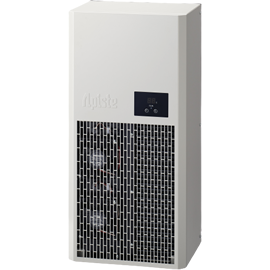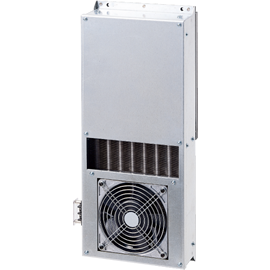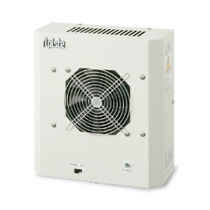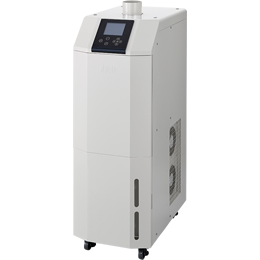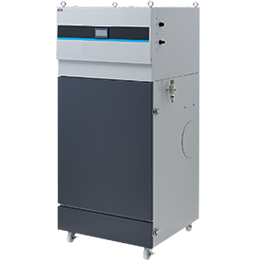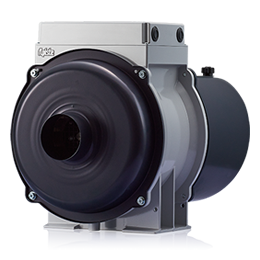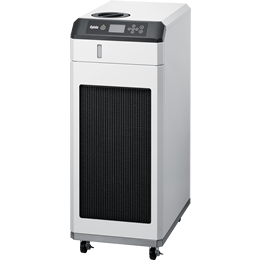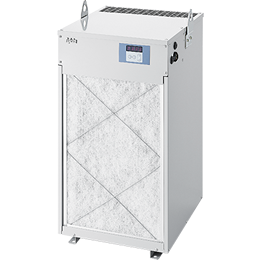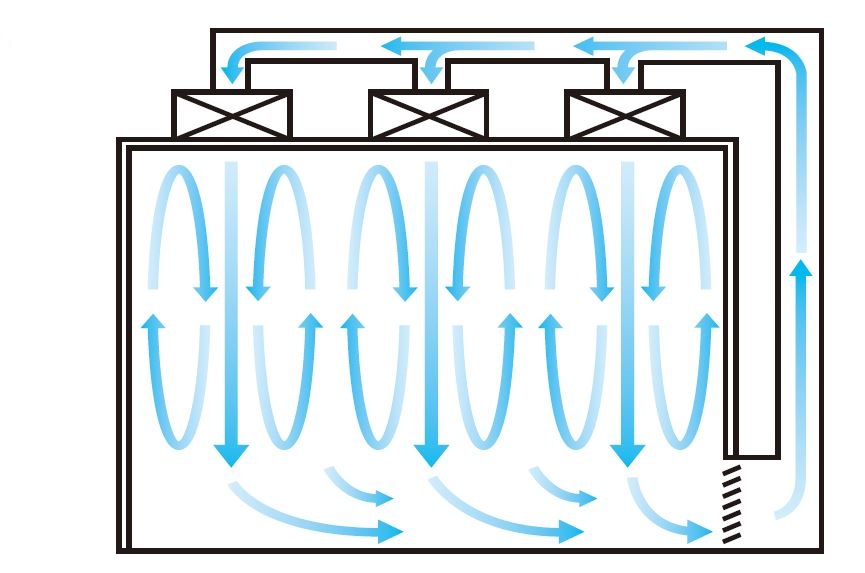Technical Information
1-1.Precision air conditioning and clean rooms
We explain temperature and humidity control using precision air conditioning and clean room cleanliness.
(1) Industrial air conditioning and process-specific conditions
As the name suggests, industrial air conditioning is air conditioning used for industrial purposes. In factory manufacturing processes, the objectives are to maintain the working environment for workers and maintain and improve product quality control, and in research and development, to evaluate products and stabilize analytical stability. Therefore, the air conditioning conditions required for industrial air conditioning vary depending on the application. In recent years, product quality control has become an important issue in the manufacturing industry. High-quality air conditioning management has attracted attention as one effective measure for this, and the scope of industrial air conditioning applications is expanding further. Industrial air conditioning has now become an indispensable part of factory manufacturing processes.
(2) Cleanliness and clean rooms
Temperature and humidity conditions for each process in industrial air conditioning
| industry | Process | Temperature conditions | humidity conditions |
|---|---|---|---|
| semiconductor | Photolithography | 22 to 24°C ±0.2°C or less | 45~50%±2~5% |
| Dry etching | 22 to 24°C ± 2°C or less | 45 to 50% ±5% or less | |
| sputtering | 22 to 24°C ± 2°C or less | 45 to 50% ±5% or less | |
| Pharmaceuticals | Powder storage | 24°C ±3°C or less | 30~50% |
| Tablet compression | 24°C ± 2°C or less | 20~40% | |
| Macro analysis/serum | 24°C ± 2°C or less | 50% | |
| Optical Lenses | polishing | 25°C ± 2°C or less | 50±5% |
| printing | 24 to 27°C ± 5°C or less | 50±2% | |
| Cutting, drying, gluing, etc. | 21~27℃ | 45~50% | |
| food | Fresh bread | 24~26.5℃ | 40~50% |
| Raw material storage | 26.5~29.5℃ | 80~85% |
*The above list is only a general guideline. Temperature and humidity conditions vary depending on environment.
Cleanliness
Improving stability of environment control is one effective measure for improving product yield and enhancing quality. One of the key elements of environment control is the management of "cleanliness." Cleanliness is a measure of the degree of air contamination within a space based on certain standards. Originally, this standard was established to quantify the cleanliness of air within clean rooms, but with advances in environment separation technology, its applications have expanded, and it is now used in spaces other than clean rooms where cleanliness is controlled.
clean room
A clean room is a special room used to achieve and maintain spatial cleanliness. Clean rooms can be categorized into two types based on their purpose of use. One is the "industrial clean room (ICR)," which is used in industrial applications to control airborne particles. The other is the "biological clean room (BCR)," which is used in the biotechnology, medical, and food industries to control airborne microorganisms. Clean rooms can also be categorized by the airflow method, such as the "downflow method" or "turbulent method." Clean rooms achieve a high level of cleanliness by using clean air to exhaust or dilute airborne particles, which are environment factors that affect cleanliness. In addition, control of environment factors such as temperature, humidity, and pressure may be required as needed.
Types of clean rooms
| Industrial Clean Room (ICR) | Liquid crystal, semiconductors, LSI, electronic components, precision equipment, printing, etching, deposition, printed circuit boards, lenses, optical discs, powder manufacturing, raw material manufacturing, etc. |
|---|---|
| Biological Clean Room (BCR) | Pharmaceuticals, operating rooms, neonatal rooms, meat processing, mushroom cultivation, plant cultivation, brewery kitchens, biotechnology, genetic testing facilities, etc. |
(3) Cleanliness standards and classes (cleanliness)
Class (cleanliness) is a standard that defines the amount of particles in a space.
Currently, the internationally unified ISO standard has been adopted, but the US federal standard "FED-STD-209D," which has been used more widely than before, is still widely used.
ISO14644-1
This applies to particles 0.1 μm or larger in size per cubic meter of air, and they are classified into classes 1 to 9. Classes are divided into digits: if the number of particles per cubic meter of air is 10 or less, it is class 1, if it is 100 or less, it is class 2, and so on.
FED-STD-209D
It is determined by the number of particles with a diameter of 0.5 μm present in 1 cubic foot of air (1 foot = approximately 30 cm) in the target space. If the number of suspended particles in 1 cubic foot of air is 100 or less, it is classified as "Class 100," and if it is 1,000 or less, it is classified as "Class 1,000."
Measurement particle size and upper limit concentration by air cleanliness class
| Cleanliness Class | Upper limit concentration (pieces/m3) Upper limit concentration (pieces/m3) | ||||||
|---|---|---|---|---|---|---|---|
| international unified standards ISO 14644-1 |
Federal Standard FED-STD-209D |
Measured particle size | |||||
| 0.1μm | 0.2μm | 0.3μm | 0.5μm | 1.0μm | 5.0μm | ||
| クラス1 | 10 | 2 | |||||
| クラス2 | 100 | 24 | 10 | 4 | |||
| クラス3 | 1 | 1,000 | 237 | 102 | 35 | 8 | |
| クラス4 | 10 | 10,000 | 2,370 | 1,020 | 352 | 83 | |
| クラス5 | 100 | 100,000 | 23.700 | 10,200 | 3.520 | 832 | 29 |
| クラス6 | 1,000 | 1,000,000 | 237,000 | 102.000 | 35,200 | 8,320 | 293 |
| クラス7 | 10,000 | 352,000 | 83,200 | 2,930 | |||
| クラス8 | 100,000 | 3,520,000 | 832,000 | 29,300 | |||
| クラス9 | 35,200,000 | 8,320,000 | 293,000 | ||||
(4) Other items related to cleanliness
filter Types
|
Coarse dust filter |
medium high-performance filter |
HEPA filter |
ULPA filter |
Super ULPA filter |
||||||
|---|---|---|---|---|---|---|---|---|---|---|
| Use clean | Nothing in particular | Class 10~200,000 | Class 100 to 1,000 | Class 10 to 100 | Class 1~10 | |||||
| Example of use | General office etc. | General office etc. | Semiconductor Manufacturing Post-process etc. |
Semiconductor front-end process Production lines, etc. |
Ultra-LSI manufacturing process | |||||
| Capacity | To the extent that foreign matter, dust, etc. are collected | Higher capturing capacity than a coarse dust filter | 0.3 μm particles Captures 99.97% have capacity |
0.15 μm particles Captures 99.9995% have capacity |
0.15 μm particles Captures 99.9999% have capacity |
|||||
| Air blowing method | Turbulent airflow | Downflow ventilation | ||||||||
Other filter
| Activated carbon filter | Chemical filter | |
|---|---|---|
| Explanation | Adsorption of ammonia, acetic acid, aldehyde gas, VOCs, etc. | chemical pollutants Removal of molecular contaminants |
| Purpose | Deodorizing applications | Semiconductor and LCD manufacturing processes |
Ventilation frequency guideline
| Clean Room Class | General values | USA209E standard | mean air velocity |
|---|---|---|---|
| Class 100,000 | 20-30 times/h | 20 | .005-.041m/sec |
| Class 10,000 | 30-70 times/h | 75 | .051-.076m/sec |
| Class 1,000 | 100-200 times/h | 150 | .127-.203m/sec |
| Class 100 | 200-600 times/h | 250~400 | .203-.408m/sec |
Ventilation rate per hour (times/h) = average air velocity (m/sec) x air outlet area (m2) x 3600 sec ÷ volume of space (m2)
Typical ventilation methods
| Downflow method | Turbulence method | Other common methods | |
|---|---|---|---|
|
|
|
|
|
| Cleanliness | Class 10 to 1,000 | Class 1,000 and above | Class 10,000 and above |
| Features | Temperature, humidity, and cleanliness are easily distributed evenly. Installation is limited because ducts are required on the ceiling and floor. | It is easy to manage. Uneven zones occur at the four corners of the space. |
Unevenness is likely to occur in proportion to the distance from the outlet. |
| initial cost |
expensive | Slightly expensive | cheap |
| running cost |
expensive | Slightly expensive | Relatively cheap |
| Non control zone |
few | Occurs in the four corners | Occurs at the farthest point of the blowout |
Inquiry
For product inquiries, quote requests, etc.
Please feel free to contact us.


